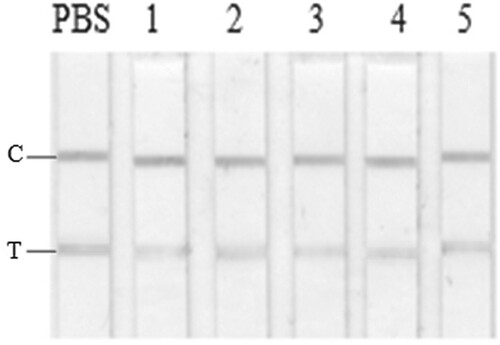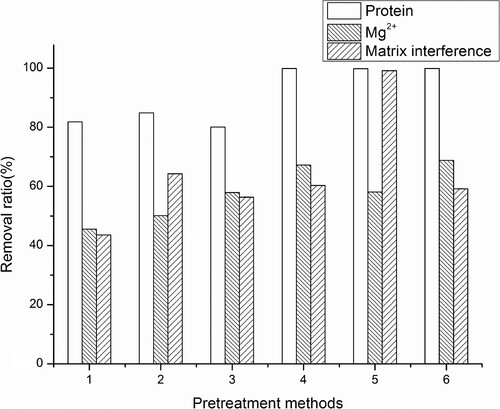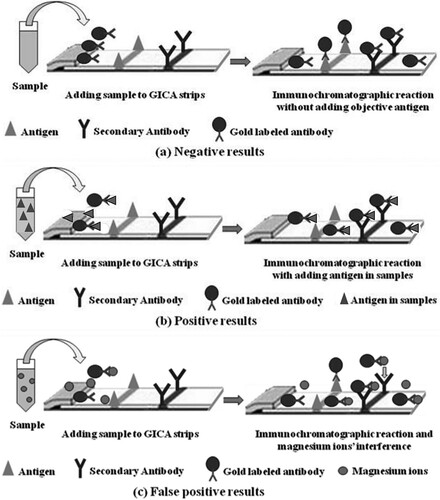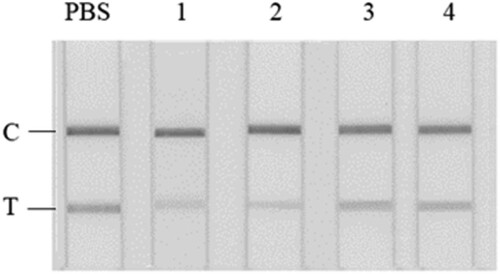Figures & data
Figure 1. GICA results for PBS (a) and crude extracts of different negative fish samples (b). From left: PBS; 1, Scophthalmus maximus; 2, Cyprinus carpio; 3, Siniperca chuatsi; 4, Aristichthys nobilis; 5, Ctenopharyngodon idella.

Figure 2. GICA results for crude extracts after 5-sulfosalicylic acid treatment. From left: Blank control; 1, Scophthalmus maximus; 2, Cyprinus carpio; 3, Siniperca chuatsi; 4, Aristichthys nobilis; 5, Ctenopharyngodon idella.

Table 1. The protein content in different fish samples.
Figure 3. GICA results for sample extracts removed lipid component (a), and for fish polysaccharide simulated solutions (b). From left: PBS; 1, Scophthalmus maximus; 2, Cyprinus carpio; 3, Siniperca chuatsi; 4, Aristichthys nobilis; 5, Ctenopharyngodon idella.

Table 2. The lipid and sugar content in different fish samples.
Figure 4. GICA results for simulated total metal ions in PBS and their gradient solutions (a, from left: PBS; 1–5: diluted with PBS to 0, 10, 50, 100 folds), single salt in PBS (b, from left: PBS; 1–5: K+, Na+, Mg2+, Al3+, Ca2+), and gradient magnesium in PBS (c, from left: PBS; 1–5: 1 g/kg, 0.5 g/kg, 0.1 g/kg, 0.05 g/kg, 0.01 g/kg).

Figure 6. The efficiency of different pre-treatments to remove protein, magnesium and matrix interference of Scophthalmus maximus. 1–3: the pH of the samples was directly adjusted with NaOH, KOH, Ca(OH)2 after acid extraction. 4–6: the pH of the samples was adjusted with NaOH, KOH, Ca(OH)2 after acid extraction and centrifugation.



